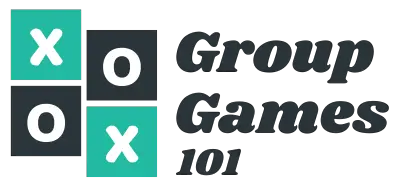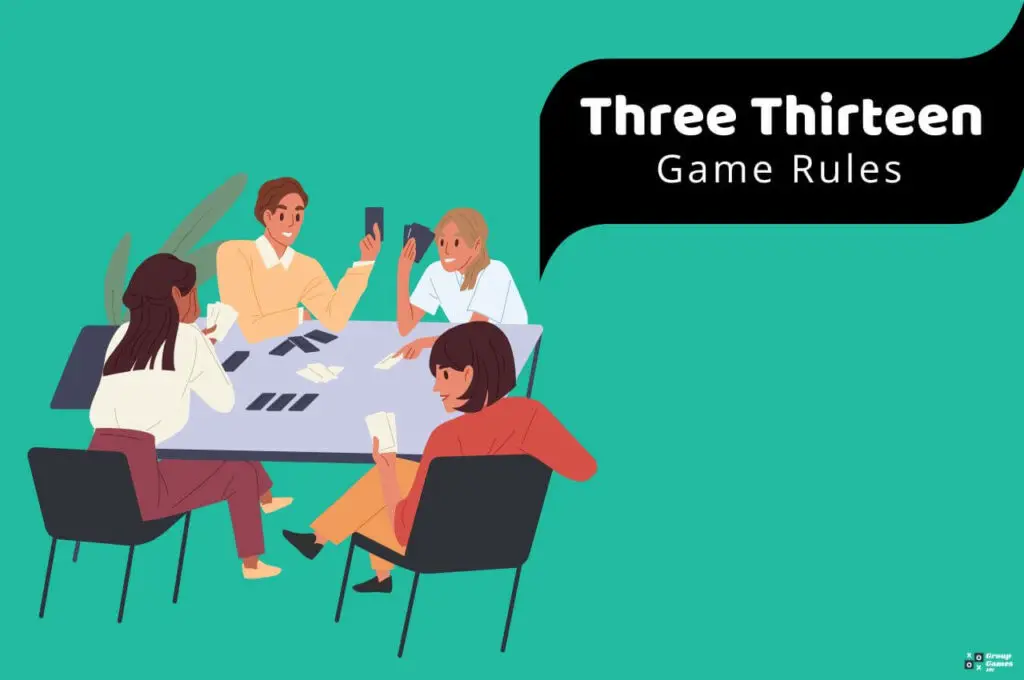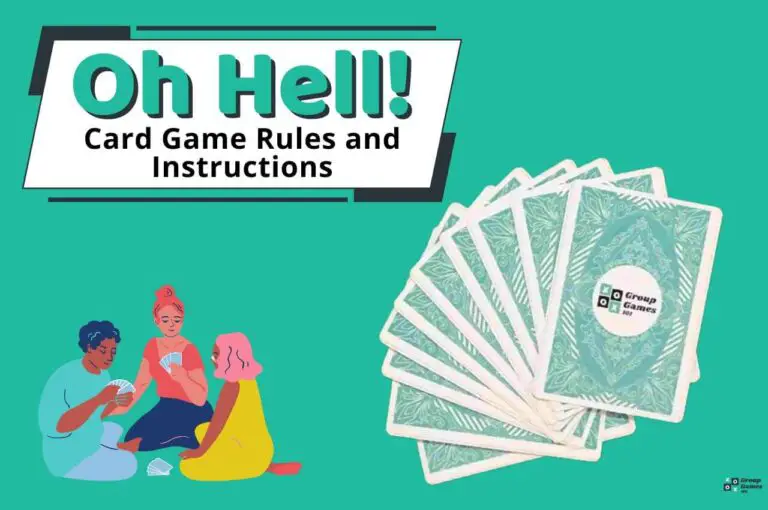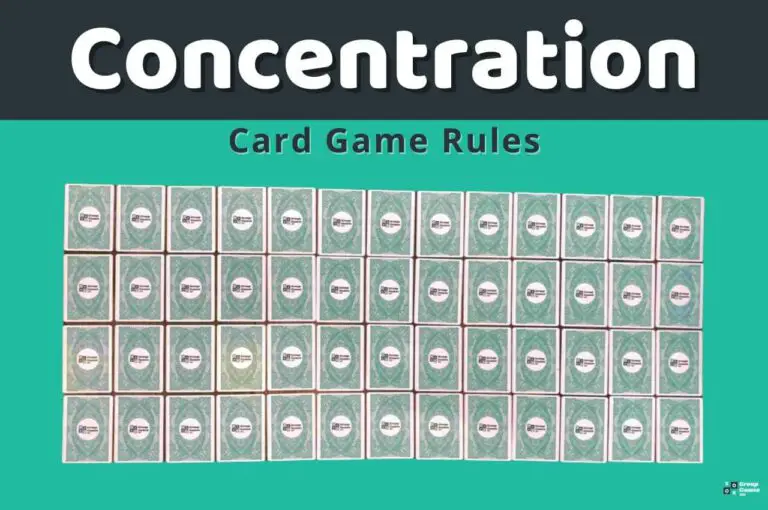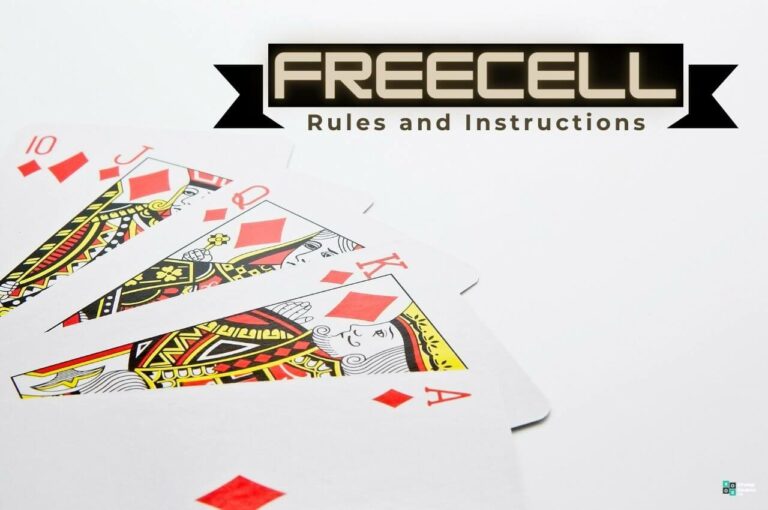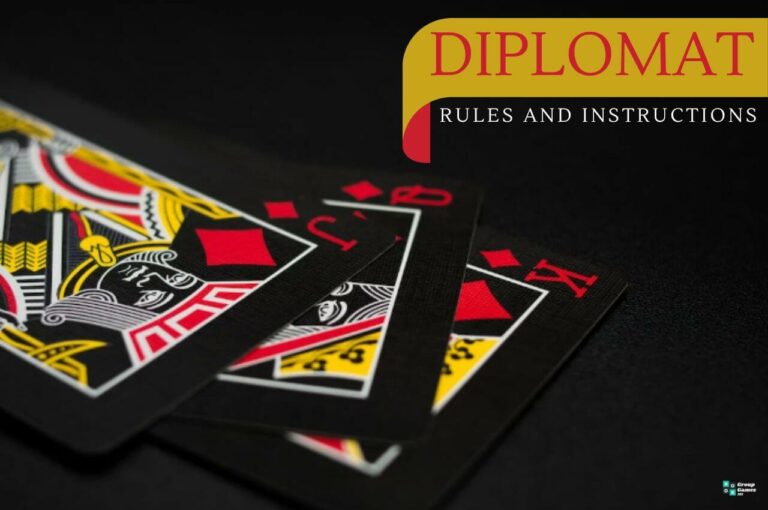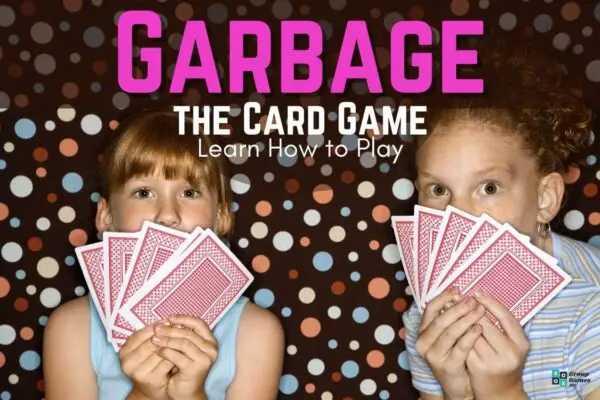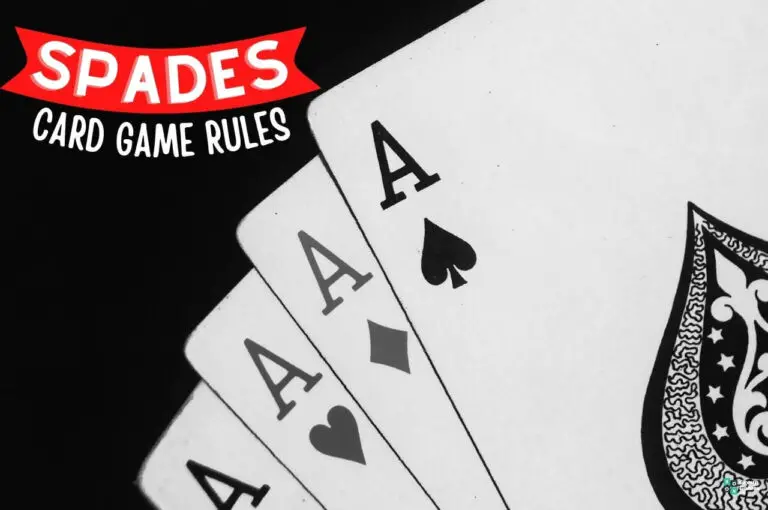Three Thirteen is an 11-round variation on Rummy for two and more players. If you’re wondering how it’s played, these Three-Thirteen card game rules explain it.
Three-Thirteen, also known as 313, is a rummy-style card game you can play anytime you have the right mood, two card decks, and at least one companion.
Its rules are simpler than the rules of Conquian, the Canasta game rules, or other games from the same family. Still, the game is exciting for both beginners and seasoned players.
Key highlights of this Three Thirteen card game rules guide:
- What is Three Thirteen
- Three Thirteen Card Game Rules
- Three Thirteen Scoring
- Three Thirteen Rules in Pictures
- How to play Three Thirteen (Video tutorial)
Read on and learn everything you want to know on how to play Three Thirteen.
What is Three Thirteen?
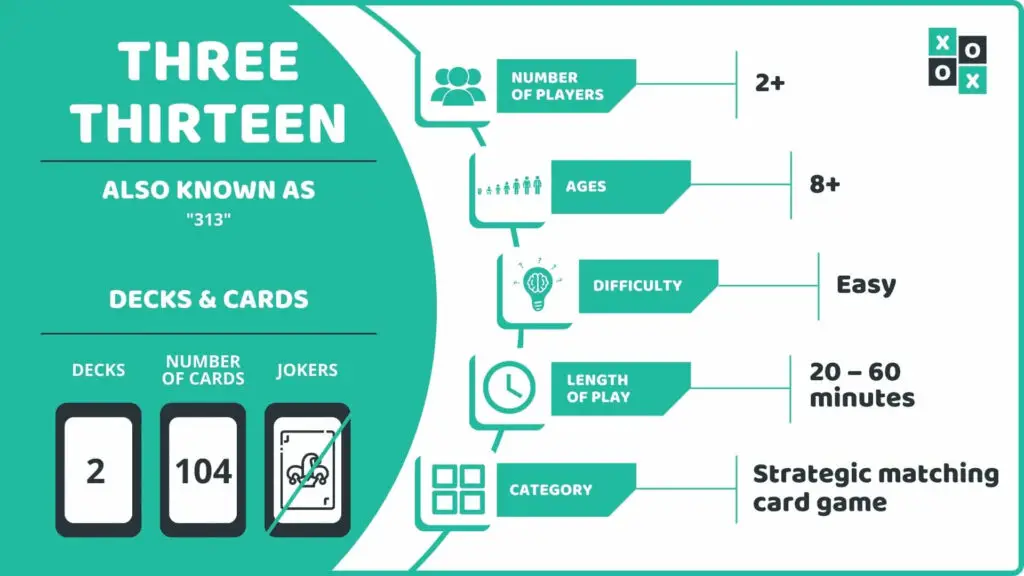
Three Thirteen is a straightforward competitive game that centers around creating card sets and avoiding penalty points. It’s suitable for 2 and more players.
Number of Players: 2+
Ages: 8+
Difficulty: Easy
Length of Play: 20 – 60 minutes
Type of Game: Card-matching game
Similar to: Contract Rummy, Tonk, Liverpool Rummy
Main Objective: Avoid penalty points by collecting sets of cards in your hand.
Our Take: Unlike many other rummy-type games, Three Thirteen is accessible even to beginners while being just as fun as its more demanding alternatives.
What You’ll Need to Play Three Thirteen
If you want to play Three Thirteen, these are the cards you’ll need:
- Decks: 2
- Number of Cards: 104
- Cards Omitted: Jokers
Three Thirteen Card Game Rules
The objective of this game is to avoid collecting points, which are awarded for any free-standing cards remaining in your hand when the round ends.
Ideally, end the round by combining all your cards into the right sets, reaching zero points. Let’s find out how this can be done.
Starting the Game
First, pick a player who will serve as a dealer for the first round of the game. This role will pass on to the next player on the left in each new round.
The deal is different in each round of this game:
- In the first round, each player gets 3 cards from the dealer.
- This number increases by 1 in each new round until players receive 13 cards in the last (11th) round.
Note that dealing also determines the wild cards for the current round.
Example: When the players get 3 cards, 3s are wild. When they get 5 cards, 5s are wild, and so on. When 11, 12, and 13 cards are dealt, the J, Q, and K, respectively, are wild cards.
Place the remaining deck face-down on the table. This will be your draw pile. Flip over the top card to form a discard pile next to it.
How to Play Three Thirteen
The player to the dealer’s left takes their turn first (the gameplay proceeds clockwise). When on a turn, a player can either:
- draw the top card from the discard pile, or
- draw the top card from the draw pile.
Now the player must discard one of their cards onto the discard pile because players must keep the same number of cards throughout the entire rounds.
Players aim to combine their cards into valid sets. However, they do not lay these sets on the table but rather collect them in hand.
When the round ends, all the cards in a proper set will be considered melded, and any free-standing card will be subject to penalty points.
The round ends when one of the players reaches zero penalty points in their hand (i.e., they “go out”). They declare a victory, and their opponents verify it by reviewing their cards.
Then, the new round begins.
Valid Card Sets
In Three Thirteen, you can collect the following card sets:
- 3+ cards of the same rank (e.g., 3 x 7s)
- 3+ cards of the same suit in a sequence (e.g., 5, 6, 7 of Clubs).
- A flush of 3+ cards of the same suit (e.g., 8, 10, and Ace of Hearts)
Remember that the same card can never be included in numerous sets.
Wild cards can replace any other card, but you can only use one in each set.
Three Thirteen Scoring
At the end of the round, count the score for each free-standing card in the players’ hands:
- Ace = 1 point
- 2 to 10 = face value
- J, K, Q = 10 points
- Wild card = 15 points
Note the scores after every round. Whoever has the fewest points at the end of the 11th round becomes the winner of the game.
Three Thirteen Rules in Pictures
Step 1
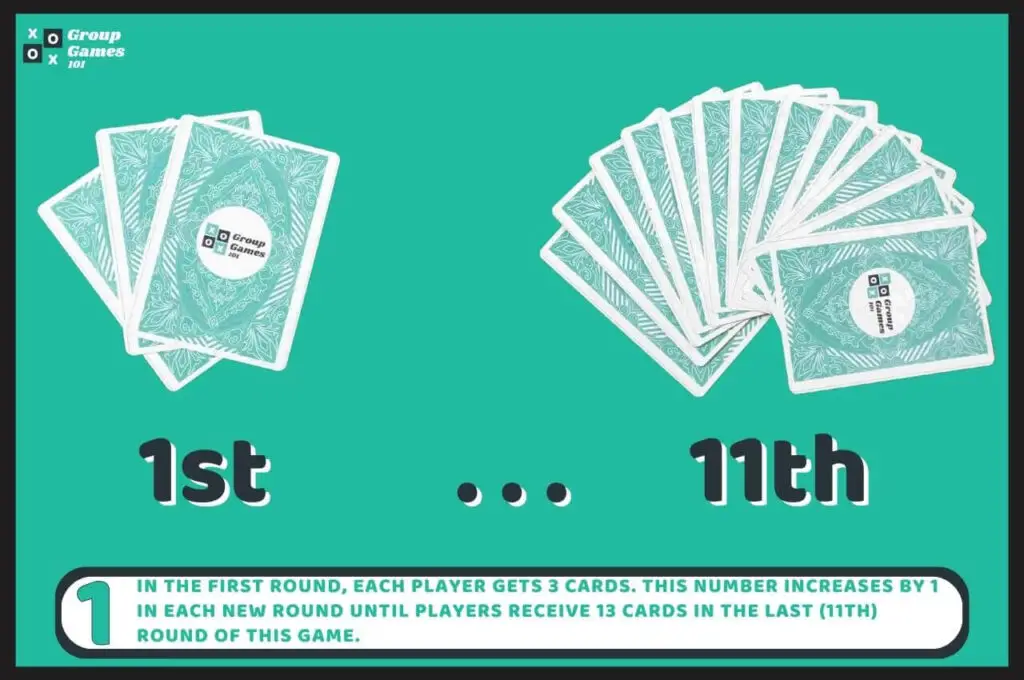
In the first round, each player gets 3 cards. This number increases by 1 in each new round until players receive 13 cards in the last (11th) round of this game.
Step 2
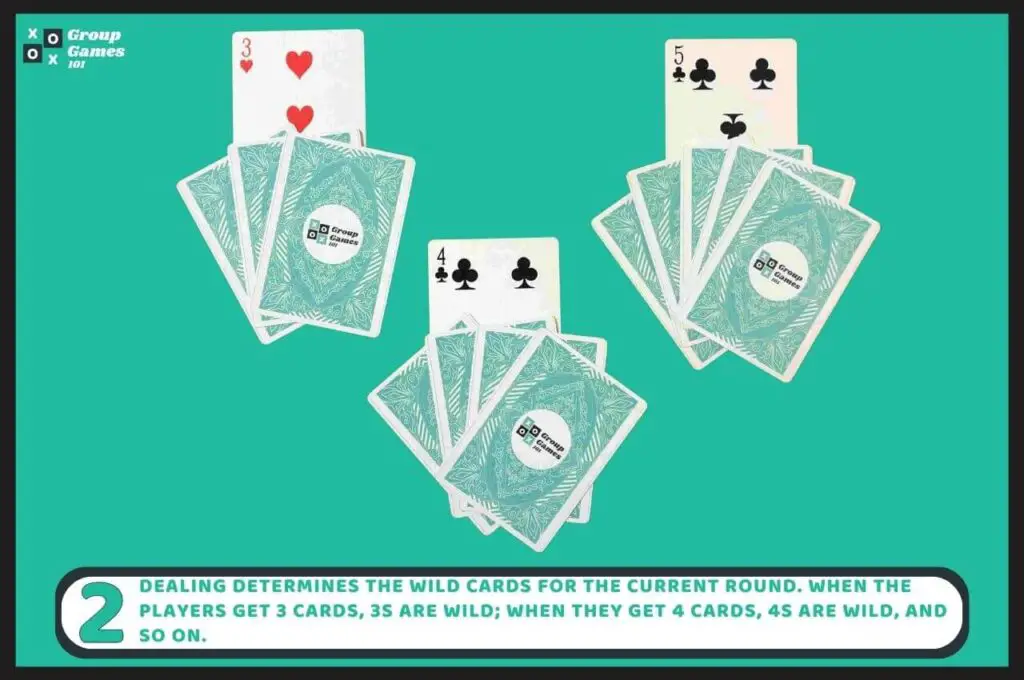
Dealing determines the wild cards for the current round. When the players get 3 cards, 3s are wild; when they get 4 cards, 4s are wild, and so on.
Step 3

Place the remaining deck face-down on the table. This will be your draw pile. Flip over the top card to form a discard pile next to it.
Step 4
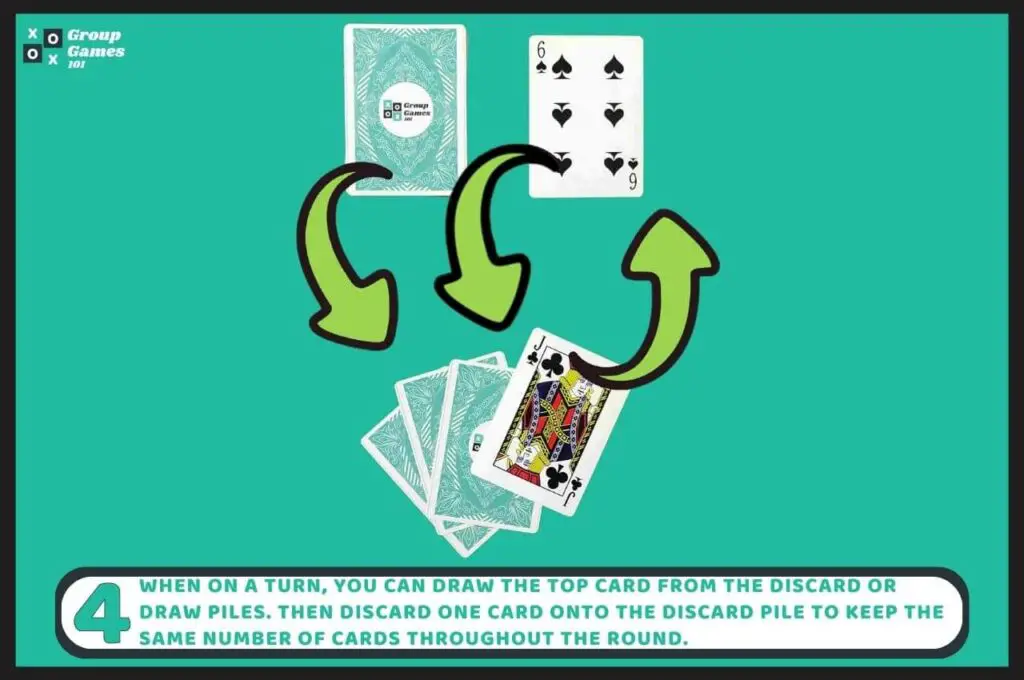
When on a turn, you can draw the top card from the discard or draw piles. Then discard one card onto the discard pile to keep the same number of cards throughout the round.
Step 5
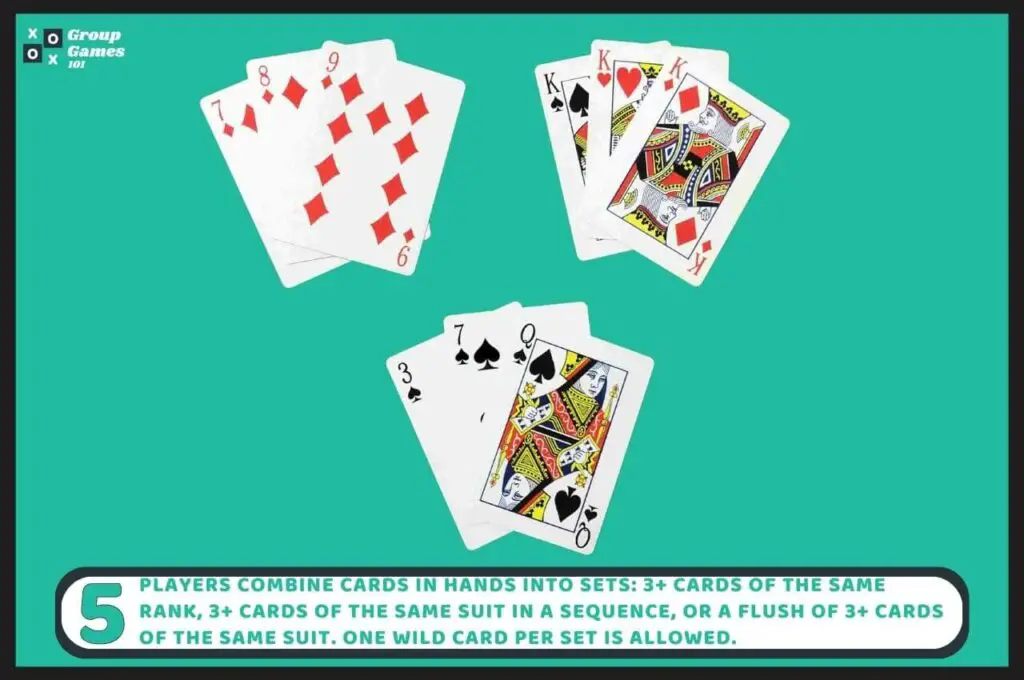
Players combine cards in hands into sets: 3+ cards of the same rank, 3+ cards of the same suit in a sequence, or a flush of 3+ cards of the same suit. One wild card per set is allowed.
Step 6
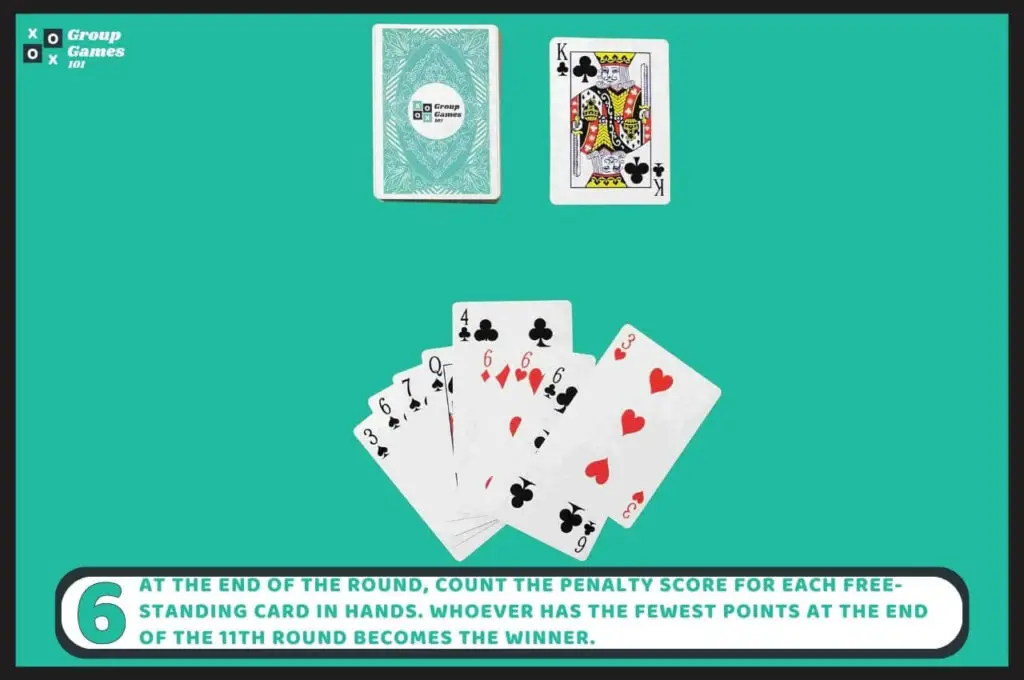
At the end of the round, count the penalty score for each free-standing card in hands. Whoever has the fewest points at the end of the 11th round becomes the winner.
How to Play Three Thirteen Card Game – Video Tutorial
Frequently Asked Questions
Can you create a set of wild cards in Three Thirteen?
According to the most common version of Three Thirteen, you cannot create a set of wild cards in the game since you can only use one wild card per set.
However, an alternative interpretation recognizes an exception if you create an entire set of wild cards. Discuss with your opponents which version you will follow.
Can more players win in the same round of Three Thirteen?
Yes, sometimes more players win in the same round of Three Thirteen if they all end up with zero penalty points. Note the scores and continue playing. The final scoring is all that matters.
What if you go out incorrectly in Three Thirteen?
Going out incorrectly in Three Thirteen means you declare victory, but your opponents discover you had some uncombined cards in hand. In this case, you score 20 penalty points.
Other Similar Games to Three Thirteen (Our Guides)
If you enjoy playing Three Thirteen, here are a few of our guides to similar games:
